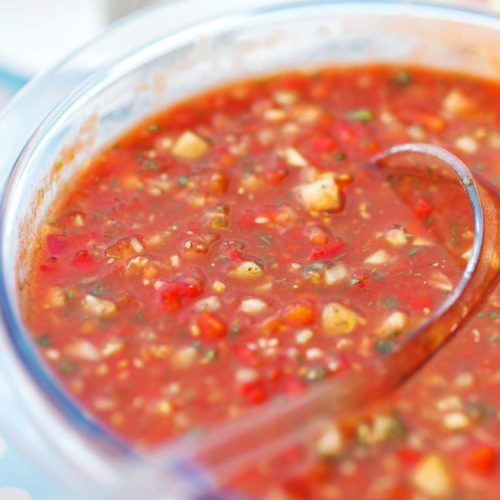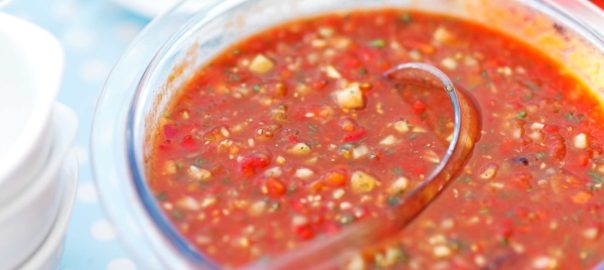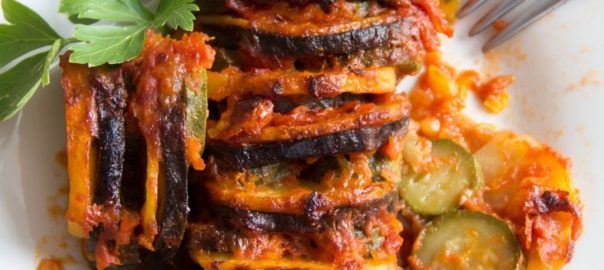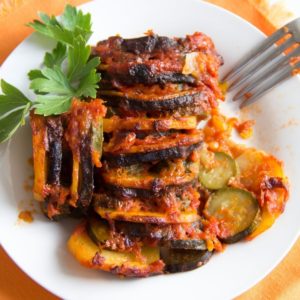Gazpacho is a cool, delicious summer soup. Originally from the Andalusia region of Spain, it's a chilled version of summer salad in soup form. I've even seen it referred to as liquid salad. That term always struck me as a bit silly. It's either a soup or it's a salad. Except, as it turns out, if it's gazpacho. Then it's sort of both.
The original version calls for bread cubes, preferably a little stale, however I don't think they're necessary. There are also versions that include chopped ham but, again, I don't think you really need that. I love gazpacho with just the vegetables. It's so easy to make, very refreshing, and a great way to get a heaping serving of veggies into your day.
This version came about when my daughter and I were trying to figure out what to make for lunch one hot Texas summer day. Rummaging through the fridge we realized that we had all of the ingredients on hand to make gazpacho. With the temperatures rising into the 90's this cool, flavorful soup was a great idea.

Gazpacho
Ingredients
- 1 cucumber
- 2 large tomatoes
- 1 small vidalia onion
- 1 sweet bell pepper
- 2 stalks of celery
- 1 zucchini or yellow squash
- 1 clove of garlic, crushed
- 1/4 C. red wine vinegar
- salt and pepper to taste
- Diced avocado
- chopped cilantro
Instructions
- Dice all vegetables through zucchini
- Add garlic, red wine vinegar, salt and pepper
- Cover with: tomato juice (we didn't measure - just poured until it covered the veggies)place in the refrigerator and chill for at least two hours
- To serve: Ladle into a bowlDrizzle with olive oilGarnish with diced avocado and chopped cilantroEnjoy!






